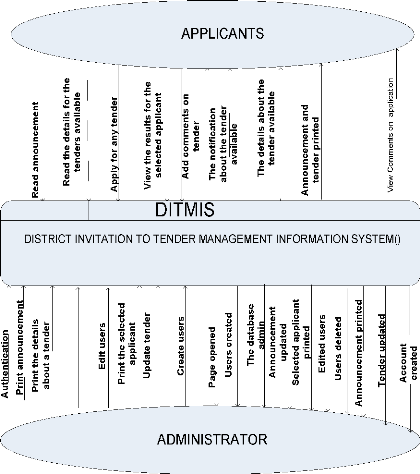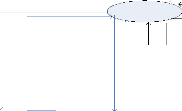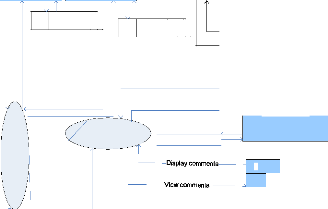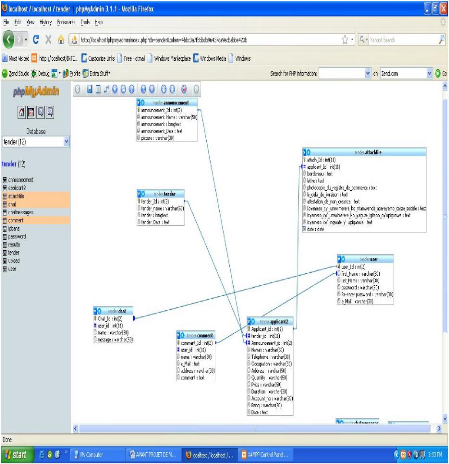CHAPTER IV. DEVELOPMENT AND IMPLEMENTATION OF THE WEB
BASED
SYSTEM.
4.1. Introduction
This chapter follows the methodology phases previously
described and gives the details and results of the research. The chapter has
two sections; the general description of Nyamagabe District and the software
development.
4.2. General description of Nyamagabe
District
Located southwest of Southern Province, the new District
Nyamagabe is one of 8 districts of Southern Province. It is bordered by the
Karongi District and Ruhango in North Nyanza and Huye in the east south ,
Nyaruguru, Rusizi and Nyamasheke in the West. The District Nyamagabe is
composed of former Districts Kaduha, Mushubi, Mudasomwa, City of Gikongoro and
11 sectors of the former District of Karaba and Nyamagabe .The District is
divided into 17 administrative sectors, 92 cells(utugari) and 536 villages
(imidugudu).
4.3. Software Development
The software development undergoes through a series of steps
process from investigation of initial requirement to the last phase of
maintenance. The investigation carried at Nyamagabe District provided us the
useful information not only about the previous system under replacement but
also the one to be constructed. Thus we undertook the activities of procurement
office and specifically for the invitation to tender process.
As a result, a system for the application for a tender has been
produced.
4.3.1 Analysis of the existing Information
System.
The initial step while developing an application program
consists exactly to find out what to be solved and what should be done. All
those features help the developer to find out what are the requirements
specifications that the system will use, what are the users, what is the
benefit of the application, and so forth.
During the data collection, the researcher compared the
existing tender system process used at Nyamagabe District, with the new
proposed system, in order to better analyze the operational system.
It is noted that the existing tender system at Nyamagabe
District is paper-based. Data recording and retrieving are done manually; which
can result in some inconvenience such as ease loss of data, the lack of
accessibility of information about tenders, the applicants, and the lack of
transparency, accountability in tender delivery process.
4.3.2. The proposed system.
While analyzing the existing system, a simple, integrated
tool which will provide both web based for the application to any available
tender and the information such as the announcement and the details about all
tenders are available online has been proposed. Access to information and all
functionality will be from basically any computer with a web browser and an
internet connection.
4.3.3. System Requirement
Specification
On their work Programmers have to meet the users'
requirements specification. It is at the phase when SRS agree both parties that
the Requirement analysis is finished. During the requirements analysis, a
graphical representation of an application system called Data Flow Model (DFM)
is established. It shows the movement of data between external entities, data
stores and processs, within a system .However, changes in requirements may
occur during the program design phase and continue to change for the
improvement of the system.
4.3.4. General Description of
DITMIS
For security reasons and proper operation, the DITMIS will be
used by different users with different privileges as it is summarized in the
table below.
System Users Goals
Applicant -Read announcement
-Read the details about the tender available -Apply for a
tender
Guests -Can consult the reports about the results
for the selected applicant
System Administrator - Print the announcement
-View all users
-View all comments -View all applicants -Print the results
for the selected applicant
-Make reports
-Update the system and maintains security
of the system
-Create and deletes users
Table 4 .1: Actor goal list
4.3.5. Specific Requirements
In specific requirements, a net difference is established
between the Functional requirements and non Functional ones.
· Functional requirements:
It is all about what the system does. Statements of services
that the system should provide, how the system should react to particular
inputs and how the system should behave in particular situations.
Setting to part the priorities granted to the system users,
the system will operate under normal operation and consider consequences and
responses due to software failure or invalid input to the system. To use the
system , an applicant have to fill or submit the applicant form and the
administrator must enter a login and password .In case of invalid login and /or
password, an error message is displayed.
· The system shall allow the applicant to apply for a
tender available.
· The system shall bring any incomplete application message
to the applicant in a way that encourages them to complete missing details.
· The system shall allow retrieving all details about all
applicants.
The system shall be able to store and allow maintenance of the
following details for all currently and previously applicants and the following
are the fields that must be filled using a form:
· Applicant_Id
· Names
· Telephone
· Occupation
· Address
· Quantity
· Price
· Duration
· Account_no
· Bank
· Date
? Non functional Requirements:
It is about how the system does in terms of performance,
security, availability, user friendliness etc. Constraints on the services or
functions offered by the system such as timing constraints, constraints on the
development process, standards, etc.
The system must be consistent, efficient, self
explanatory and flexible; to provide the basic characteristics:
· Rapid retrieval
· Availability of 24/7(24 hours over 7 days of the week)
· Availability at convenient places
· Easy data input
· Easy applicant access
· Safeguards and confidentiality
· Easily customized output interface
· The system shall be capable of being used simultaneously
from several screens.
4.3.6. Process Modeling
The most common model used to present functions or processes
that capture, manipulate store and distribute data between a system and its
environment is the Data Flow Diagram.DFDs are the corn stones of structured
analysis and design because they show the flow of data or information around
the system.
4.3.6.1. System outline
The role of a system outline is to show how input data are
moving into process in order to get output data. Those outputs generate, files,
and files generate outputs. The input are listed at the top left, Processes at
the top right, And Files at the bottom left.
INPUT
PROCESSES PR

1: Read the announcement
2: Application for a tender
Applicant reports

Applicant_Id
Names
Telephone Occupation
Address Quantity Price
Duration Account_no
Bank
OUTPUT

Date

FILES

Applicant file
Not analysed applicants file Analysed applicant file
Users file
Announcement file
Selected applicant file
Comments file
Figure 4.1: System outline for DITMIS Source:
Own drawing
4.3.6.2. Context Diagram / Level 0
The context diagram represents the entire system under
investigation. It is used to clarify and agree to scope of the investigation
The system under investigation is represented as a single process, connected to
external entities by data flows and resource flows.On the following pages
detailed higher level DFDs are elaborated in DITMIS logical system.
Level 0 district invitation to tender management
information system (DITMIS)

Figure 4. 2: District invitation to tender management
information system context Diagram / Level 0
Source: own drawing


4.3.6.3.Level1DataflowDiagram
Admin
File downloaded
Print announcement
Successfully printed
Admin page displayed
|
Account created
|
Details printed
|

Print details for tender
Create
Download file
Login
administrator's
account
Print
announcement
Print details for tender
6 DITMIS
Upload files
D1
files

Tender file
Administrator's account
D2
D4
Announcement file
Files uploaded
Upload files
Announcement result
Read announcement
D9


Applicant
Display applications
View applications

8

D7
|
|
Application accepted
|
|
Comments file
|
|
|
|
|
Apply for atender

DITMIS

10
Admin
Applicant
Application file
Display selected appliants
View selected applicants
Session closed
Session_close request
D3 Administrator's account
file
5 DITMIS
View appications
D5
7
DITMIS
View comments
DITMIS
Logout
Application for tender file

Apply for a tender

View selected applicant
D10 selected applicant file
Figure4.3 Level1 Data flow diagram Source Own drawing
4.3.6.4 DITMIS List of Tables
Announcement
Announcement_id Announcement_Name Announcement
Announcement_Date
Tender
Tender_id Tender_Name Tender Tender_date
Comment
|
Comment_id Name
E_mail
Address Comment
|
Password
User_id First_name Last_name Password Access_level Level_number
E_mail
|
|
Users
|
|
Results
|
|
|
User_id First_name Last_name Password Re_enter pas sword
E_mail
|
|
Id
Names Address Quantity Price
Details Date
District
|
|
|
|
Applicant2
|
Applicant_id Announcement_id Names
Telephone Occupation\ Address
Quantity
Price
Duration Account_no Bank
Date
|
Table: 4.2 .DITMIS _ List of Tables Source: Own
drawing
4.3.6.5 ER-Diagram

Figure 4.4 E R Diagram Source: Own drawing
4.3.7 Tools Used
+ HTML (Hypertext Mark-up Language)
HTML, an initialism for Hypertext Mark-up Language, is the
predominant markup language for web pages. It provides a means to describe the
structure of text-based information in a document by denoting certain text as
links, headings, paragraphs, lists, etc. and to supplement that text with
interactive forms, embedded images, and other objects. HTML
is written in the form of "tags" that are surrounded by angle brackets. HTML
can also describe, to some degree, the appearance and semantics of a document,
and can include embedded scripting language code (such as JavaScript) that can
affect the behavior of Web browsers and other HTML processors.
(Retrieved June 19.2009 from t
http://en.wikipedia.org/wiki/HTML)
+ CSS (Cascading Style Sheets)
Cascading Style Sheets (CSS) is a style sheet language used to
describe the presentation (that is, the look and formatting) of a document
written in a markup language. Its most common application is to style web pages
written in HTML and XHTML, but the language can be applied to any kind of XML
document, including SVG and XUL.
(Retrieved June 19.2009 from
http://en.wikipedia.org/wiki/Cascading_Style_Sheets
) + Php
PHP is a scripting language originally designed for producing
dynamic web pages. It has evolved to include a command line interface
capability and can be used in standalone graphical applications.
(Retrieved June 19.2009 from http://www.php.net/ ) + Java
Script
JavaScript is a scripting language used to enable programmatic
access to objects within other
applications. It is primarily used in the
form of client-side JavaScript for the development of
dynamic websites.
JavaScript is a dialect of the ECMAScript standard and is characterized as a
dynamic, weakly typed, prototype-based language with
first-class functions. JavaScript was influenced by many languages and was
designed to look like Java, but to be easier for non-programmers to work
with.
(Retrieved June 19.2009 from
http://en.wikipedia.org/wiki/JavaScript)
+ Mysql
MySQL is a relational database management system (RDBMS) which
has more than 6 million installations. The program runs as a server providing
multi-user access to a number of databases.(Retrieved June 19.2009 from
http://en.wikipedia.org/wiki/MySQL)
+ Adobe Flash
Adobe Flash (previously called Macromedia Flash) is a
multimedia platform originally acquired by Macromedia and currently developed
and distributed by Adobe Systems. Since its introduction in 1996, Flash has
become a popular method for adding animation and interactivity to web pages.
Flash is commonly used to create animation, advertisements, and various web
page components, to integrate video into web pages, and more recently, to
develop rich Internet applications.(Retrieved June 19.2009 from
http://en.wikipedia.org/wiki/Adobe_Flash)
+ Adobe Photoshop
Adobe Photoshop, or simply Photoshop, is a powerful graphics
editing program (also known as a DPP, Desktop Publishing Program) developed and
published by Adobe Systems. It is the current and primary market leader for
commercial bitmap and image manipulation software, and is the flagship product
of Adobe Systems. It has been described as "an industry standard for graphics
professionals and was one of the early "killer applications" on the PC.
(Retrieved June 19.2009 from
http://en.wikipedia.org/wiki/Adobe_Photoshop
)
+ Adobe Dreamweaver
Adobe Dreamweaver (formerly Macromedia Dreamweaver) is a web
development application originally created by Macromedia, and is now developed
by Adobe Systems, which acquired Macromedia in 2005.
(Retrieved June 19.2009 from
http://en.wikipedia.org/wiki/Adobe_Dreamweaver/)
+ Apache
The Apache HTTP Server commonly referred to as Apache, is a
web server notable for playing a key role in the initial growth of the World
Wide Web. In 2009 it became the first web server to surpass the 100 million web
site milestone.
(Retrieved August 7.2009 from
http://en.wikipedia.org/wiki/Apache)
| 












